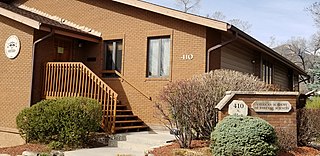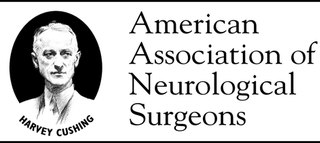Related Research Articles
The World Professional Association for Transgender Health (WPATH), formerly the Harry Benjamin International Gender Dysphoria Association (HBIGDA), is a professional organization devoted to the understanding and treatment of gender identity and gender dysphoria, and creating standardized treatment for transgender and gender variant people. WPATH was founded in September 1979 by endocrinologist and sexologist Harry Benjamin, with the goal of creating an international community of professionals specializing in treating gender variance.

The Field Museum of Natural History (FMNH), also known as The Field Museum, is a natural history museum in Chicago, Illinois, and is one of the largest such museums in the world. The museum is popular for the size and quality of its educational and scientific programs, and its extensive scientific specimen and artifact collections. The permanent exhibitions, which attract up to 2 million visitors annually, include fossils, current cultures from around the world, and interactive programming demonstrating today's urgent conservation needs. The museum is named in honor of its first major benefactor, Marshall Field, the department-store magnate. The museum and its collections originated from the 1893 World's Columbian Exposition and the artifacts displayed at the fair.

Elasmobranchii is a subclass of Chondrichthyes or cartilaginous fish, including sharks, rays, skates, and sawfish. Members of this subclass are characterised by having five to seven pairs of gill clefts opening individually to the exterior, rigid dorsal fins and small placoid scales on the skin. The teeth are in several series; the upper jaw is not fused to the cranium, and the lower jaw is articulated with the upper. The details of this jaw anatomy vary between species, and help distinguish the different elasmobranch clades. The pelvic fins in males are modified to create claspers for the transfer of sperm. There is no swim bladder; instead, these fish maintain buoyancy with large livers rich in oil.

The American Academy of Forensic Sciences (AAFS) is a society for forensic science professionals, and was founded in 1948.
The Society for the Scientific Study of Sexuality is a 501(c)(3) non-profit professional membership organization "dedicated to advancing knowledge of sexuality and communicating scientifically based sexuality research and scholarship to professionals, policy makers, and the general public." SSSS was originally incorporated in 1966 as The Society for the Scientific Study of Sex, but in 1996, the name was expanded to The Society for the Scientific Study of Sexuality to better reflect the wide range of members’ research interests and because the term “sex” was often interpreted narrowly to refer only to “sexual behavior.” The membership includes anthropologists, biologists, educators, historians, nurses, physicians, psychologists, sociologists, theologians, therapists, and others. SSSS produces the Journal of Sex Research, a scholarly journal currently published by Taylor & Francis.

The Botanical Society of Britain and Ireland (BSBI) is a scientific society for the study of flora, plant distribution and taxonomy relating to Great Britain, Ireland, the Channel Islands and the Isle of Man. The society was founded as the Botanical Society of London in 1836, and became the Botanical Society of the British Isles, eventually changing to its current name in 2013. It includes both professional and amateur members and is the largest organisation devoted to botany in the British Isles. Its history is recounted in David Allen's book The Botanists.
Stewart Springer was an American ichthyologist and herpetologist. He was a world-renowned expert on shark behavior, classification (taxonomy), and population distribution. More than 35 species of sharks, skates, rays, and other creatures are either classified by or named after him.
The American Society of Ichthyologists and Herpetologists (ASIH) is an international learned society devoted to the scientific studies of ichthyology and herpetology. The primary emphases of the society are to increase knowledge about these organisms, to communicate that knowledge through publications, conferences, and other methods, and to encourage and support young scientists who will make future advances in these fields. The programs of the American Society of Ichthyologists and Herpetologists are part of a global effort to interpret, understand, and conserve the Earth's natural diversity and to contribute to the wise use of natural resources for the long-term benefit of humankind.

Charles Duncan Michener was an American entomologist born in Pasadena, California. He was a leading expert on bees, his magnum opus being The Bees of the World published in 2000.

In biology, the electric organ is an organ that an electric fish uses to create an electric field. Electric organs are derived from modified muscle or in some cases nerve tissue, and have evolved at least six times among the elasmobranchs and teleosts. These fish use their electric discharges for navigation, communication, mating, defence, and in strongly electric fish also for the incapacitation of prey.

The smalltooth sawfish is a species of sawfish in the family Pristidae. It is found in shallow tropical and subtropical waters in coastal and estuarine parts of the Atlantic. Reports from elsewhere are now believed to be misidentifications of other species of sawfish. It is a critically endangered species that has disappeared from much of its historical range.

George W. Parshall was an American organometallic chemist who made notable contributions to homogeneous catalysis. He was a senior scientist at E. I. du Pont de Nemours and Company for many years.
The Journal of the Royal Statistical Society is a peer-reviewed scientific journal of statistics. It comprises three series and is published by Oxford University Press for the Royal Statistical Society.

The American Association of Neurological Surgeons (AANS) is a scientific and educational association focused on advancing the specialty of neurological surgery. The organization has over 8,000 members around the world. It is one of the five Continental Associations of the World Federation of Neurosurgical Societies (WFNS), the other four being the AASNS, CAANS, EANS and FLANC.
The American Association of Pathologists and Bacteriologists (AAPB) was an American national professional association established in 1901, devoted to fundamental science and academic medicine as distinct from clinical medicine. In 1976, they joined with the American Society for Experimental Pathology (ASEP) to form the American Association of Pathologists (AAP), which in 1992 became the American Society for Investigative Pathology (ASIP).

The Health Physics Society (HPS) is a nonprofit scientific professional organization whose mission is excellence in the science and practice of radiation safety. It is based in the United States and the specific purposes of the society's activities include encouraging research in radiation science, developing standards, and disseminating radiation safety information. Society members are involved in understanding, evaluating, and controlling potential risks from radiation relative to the benefits.
The Genetics Society of America (GSA) is a scholarly membership society of more than 5,500 genetics researchers and educators, established in 1931. The Society was formed from the reorganization of the Joint Genetics Sections of the American Society of Zoologists and the Botanical Society of America.
The Sleep Research Society (SRS) is an organization that promotes the science of sleep and related disorders. Additionally, the SRS is dedicated to the training and education of future sleep researchers.
The APA Award for Distinguished Professional Contributions to Applied Research is a scientific award presented by the American Psychological Association "to a psychologist whose research has led to important discoveries or developments in the field of applied psychology."
The European Society of Clinical Microbiology and Infectious Diseases (ESCMID) is a non-profit scientific international organization with headquarters in Basel, Switzerland. Its mission is to improve the diagnosis, treatment and prevention of infection-related diseases by promoting and supporting research, education, training, and good medical practice. An important activity of the society is the organization of the annual scientific congress ECCMID. This is recognized as the largest international forum for disseminating research in the fields of medical microbiology and infectious diseases for experts in academia, clinical settings and industry. The congress began as a biennial event, with about 1,500 participants at its inaugural occurrence in 1983. It became an annual event in the year 2000, and it has grown since then, now attracting around 14,000 participants annually. More than 5,000 scientific abstracts are submitted for inclusion each year by researchers from multiple countries. The most recent ECCMID was held in April 2023 in a hybrid format, both online and onsite in Copenhagen, Denmark.
References
- ↑ Shiffman, David S.; Arguedas Álvarez, Triana; Bangley, Charles W.; Boyt, Reilly; Côté, Isabelle M.; Daly-Engel, Toby S.; Davis, Alexandra C. D.; Gaskins, Leo C.; Graham, Jasmin; Graham, R. T.; Johri, Shaili; Macdonald, Catherine C.; Paig-Tran, E. W. Misty; Roca, Alberto I.; Schwieterman, Gail D. (2022). "What Can Professional Scientific Societies Do to Improve Diversity, Equity, and Inclusion: A Case Study of the American Elasmobranch Society". Frontiers in Education. 7. doi: 10.3389/feduc.2022.842618 . ISSN 2504-284X.